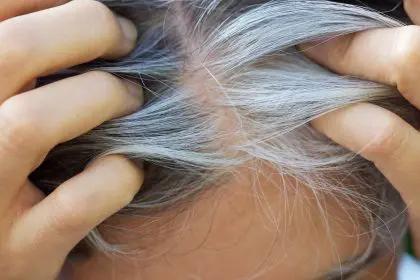Evidence-based strategies for maintaining healthy skin during cold months

PeopleImages.com – Yuri A
As winter rolls in, the cold, dry air begins to take its toll on our skin. The arrival of winter doesn’t just mean bundling up with extra layers, it also brings a whole set of challenges for skin health. The combination of low temperatures, cold winds, and indoor heating systems can compromise your skin’s natural moisture barrier, leaving it dry, irritated, and uncomfortable. Knowing how to protect and nourish your skin during the winter months is key to keeping it healthy and glowing.
Understanding winter’s impact
Winter is not just about chilly winds and snowflakes – it’s a season that poses specific challenges for your skin. The cold weather outside, coupled with the dry indoor heat, creates an environment where the skin is constantly battling to maintain its hydration levels. These drastic changes can significantly impact the skin’s moisture levels and overall health.
The skin’s outermost layer, known as the epidermis, is particularly susceptible to the harsh environmental conditions during winter. As the weather gets colder, the skin’s natural oils and moisture evaporate more quickly, leaving it dry and vulnerable. Additionally, the lack of humidity during winter months means the air is less likely to hold moisture, contributing to even drier skin. Understanding these factors can help you take proactive steps to protect your skin from the seasonal change.
The science behind winter skin
When winter sets in, the skin struggles to maintain proper hydration. The outer layer of the skin – the epidermis – becomes particularly vulnerable to environmental stressors. One of the primary challenges is the drop in humidity levels. Both outdoor and indoor environments during winter are typically low in moisture, causing the skin to lose hydration more rapidly than in warmer months.
The outermost skin barrier, made up of lipids and proteins, serves as a protective shield against external irritants and moisture loss. Cold air, combined with indoor heating, can compromise this barrier function, leading to dryness, irritation, and even cracked skin. Additionally, the colder temperatures can reduce blood flow to the skin, limiting its ability to repair itself and regenerate. This creates a perfect storm for winter skin problems, making it essential to adopt a more diligent skincare routine during these months.
Essential hydration strategies
The key to maintaining healthy skin throughout the winter months lies in hydration. Proper hydration doesn’t just mean drinking water; it involves maintaining the skin’s moisture balance and protecting its natural barrier. To keep skin hydrated and healthy, it’s important to focus on three main strategies: cleansing, moisturizing, and protecting.
Start with a gentle cleansing routine that preserves the skin’s natural oils. Harsh soaps and scrubs can strip the skin of essential moisture, leaving it drier and more prone to irritation. Instead, opt for gentle, hydrating cleansers that help maintain your skin’s natural moisture levels. This will ensure your skin is clean without compromising its hydration.
After cleansing, focus on applying a nourishing moisturizer that helps lock in moisture and repair the skin’s barrier. Moisturizing regularly throughout the day can go a long way in maintaining healthy, hydrated skin. In addition, consider incorporating a heavier moisturizer at night to give your skin an extra boost of hydration as you sleep.
Optimizing your shower routine
While a long, hot shower on a cold winter day can feel comforting, it can actually damage your skin’s protective barrier. Hot water strips the skin of its natural oils, leaving it drier and more vulnerable to the cold. Instead, try to take lukewarm showers and keep them brief. This will help preserve your skin’s oils and protect its moisture levels.
Post-shower care is equally important. To maximize hydration, apply a moisturizer immediately after your shower while your skin is still slightly damp. This helps lock in moisture and keeps your skin soft and hydrated. Don’t skip this step – it’s one of the simplest and most effective ways to combat winter dryness.
Product selection principles
Choosing the right skincare products is essential during the winter months. Some ingredients are particularly beneficial for keeping skin hydrated and healthy in cold weather. Here are some key ingredients to look for in your winter skincare products:
Ceramides for barrier repair: Ceramides are lipids that help restore the skin’s natural barrier, preventing moisture loss and keeping irritants out. Using products with ceramides can help strengthen the skin’s defenses during winter.
Hyaluronic acid for deep hydration: This powerhouse ingredient attracts moisture to the skin, ensuring deep hydration. It helps plump the skin, giving it a smooth, healthy appearance.
Glycerin for moisture retention: Glycerin draws moisture from the environment into the skin, helping to keep it hydrated even in dry conditions. It’s a great ingredient to keep skin soft and moisturized.
Squalane for barrier protection: Squalane is a lightweight, non-comedogenic oil that helps protect the skin’s moisture barrier while delivering long-lasting hydration.
These ingredients are crucial for maintaining healthy, moisturized skin during the winter months. Look for creams, lotions, and serums that contain these powerful components to help keep your skin hydrated and protected.
Environmental considerations
While skincare products play a vital role in winter skin health, creating a skin-friendly environment is just as important. During the winter, indoor heating can dry out the air, further exacerbating the issue of skin dehydration. One simple way to combat this is by using a humidifier. A humidifier helps maintain optimal humidity levels in your home, preventing the air from becoming too dry and ensuring your skin can retain moisture.
In addition to using a humidifier, make sure to protect your skin from the harsh winter elements when you go outside. Wear appropriate clothing, such as gloves, scarves, and hats, to shield your skin from the cold wind. This simple step can go a long way in preventing chapped lips, cracked hands, and dry patches on your face.
Professional intervention
Sometimes, despite your best efforts, skin issues persist. If you’re dealing with persistent dryness, irritation, or other skin problems that over-the-counter products can’t fix, it may be time to seek professional guidance. A dermatologist can assess your skin’s condition and provide personalized recommendations tailored to your needs.
Whether it’s prescribing a stronger moisturizer or recommending professional treatments, a healthcare provider can offer targeted solutions for more severe winter skin issues. When the cold weather becomes too much for your skin to handle on its own, seeking professional help can make all the difference.
Final thoughts
Maintaining healthy skin during the winter months requires a proactive approach. From protecting your skin’s natural moisture barrier to choosing the right products and optimizing your environment, there are many ways to ensure your skin stays hydrated and healthy. By understanding the science behind winter skin and adopting evidence-based strategies, you can keep your skin glowing all season long, no matter how cold it gets outside. Stay hydrated, protect your skin, and embrace the winter season with confidence!













